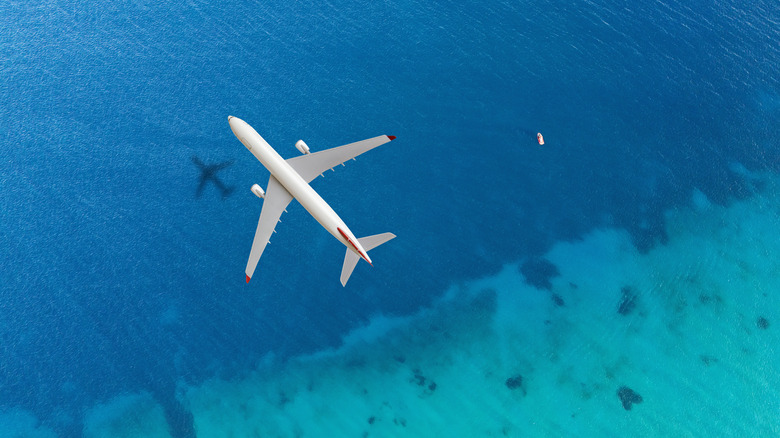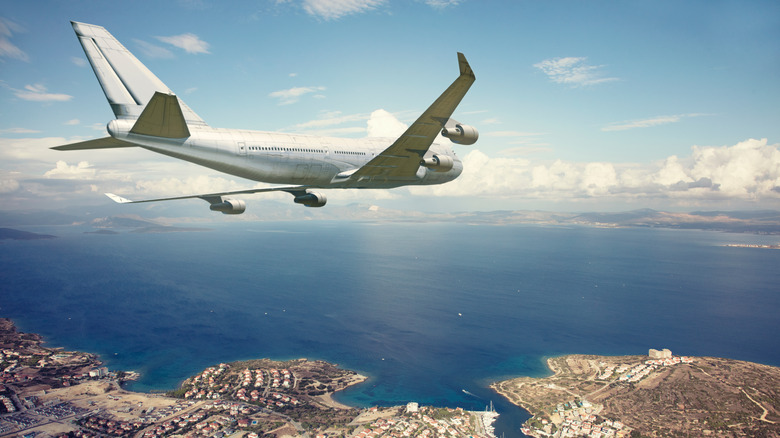What Really Happens When A Plane Faces An Emergency Mid-Ocean, Per A Veteran Pilot
A reinforced door on a plane separates two entirely different worlds. On one side, a sealed tube full of shuffling flight attendants, crinkling snack bags, and likely some nervous flyers wondering what all those weird airplane noises mean. On the other side is the cockpit, one of the most disciplined workplaces in the world, full of technical rituals and vigilant monitoring to respond to the slightest changes in weather and aircraft conditions.
Anything from a bird strike to a medical incident on board can prompt the pilots to make an emergency landing, swiftly returning to land in order to protect passengers. But what if the flight is over the ocean when the emergency occurs? Veteran pilot and internet star Steven Schreiber from New Orleans offered some reassurance about such a situation in a TikTok.
"We train for that all the time," Schreiber said, responding to a commenter's question about what happens when there's an issue in the middle of a transatlantic flight. He explained that each flight follows "tracks," or pre-designated flight paths that both keep planes at a safe distance from one another and provide the planes with diversion routes to land if necessary. "You're never more than two hours at most from a suitable alternate [for landing]," he assured. Part of the pilots' training, he explained, is staying aware of these alternate diversions and constantly evaluating the most efficient way to reach one.
Where do planes land if there's a mid-ocean emergency?
Since he was responding to a question about a transatlantic flight, Schreiber provided some example diversion routes for when an emergency occurs over the Atlantic Ocean to help those who are nervous about flying feel safe in the air. He explained that tracks in the North Atlantic can make an emergency landing in the Canadian Maritimes on the North American side of the ocean and Greenland, Iceland, Scotland, or Ireland on the other. "If you've got a southerly track away from those airports, Lajes in the Azores is never really more than two hours away," Schreiber said.
Schreiber didn't provide details about flights that go over the Pacific Ocean — to be fair, planes typically avoid flying over the Pacific — but they have their own diversion airports, too. According to the Sheffield School of Aeronautics, transpacific flights don't often go straight across the ocean, but rather follow curved routes that ensure land is closer to the flight tracks. In the middle of the Pacific Ocean, there are various remote islands that can serve as emergency landing points.
In May 2025, for example, a United Airlines flight from Sydney to San Francisco had to make a diversion when there was a medical emergency on board, Business Insider reported. It took two hours for the flight to change course and land on the island of Samoa. There's also a diversion airport at Midway Atoll, a small U.S. territory that sits just to the east of the International Date Line, roughly halfway between North America and Asia.

